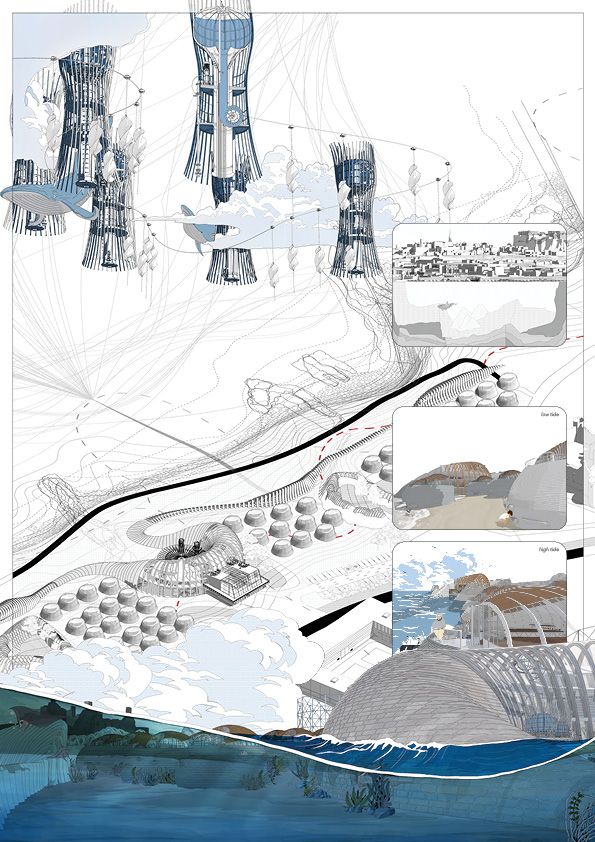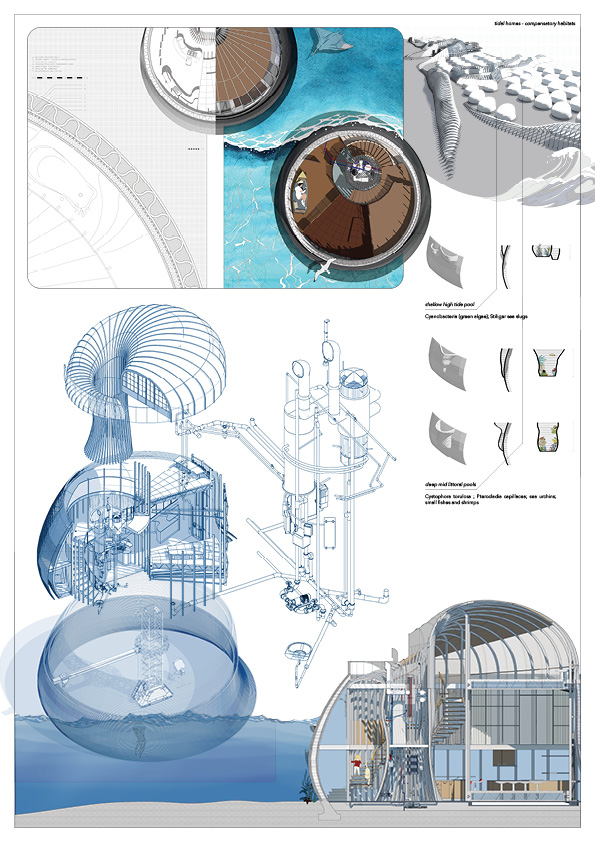Anqi Wang


The project explores the reach of the city: questioning paradigms of centralized urban expansion and speculating how accepting oceanic encroachments might inform new typologies of home. Like the green belt, the blue belt is a three-dimensional spatial construct within which important exchanges between urbanity and marine life happen. Predicted sea level rise highlights these dynamic qualities - of both delight and danger. Municipal power may stop at the legislative boundary line of the shore, but urban flows such as water supply and discharge always exceed limits, mingling with other ecologies.
The Granton coastal edge of the Firth of Forth is the test site. This was a designated ‘special industrial area’ in Abercrombie and Plumstead’s 1949 postwar plan which overwrote remnants of historic land-use - mainly farming and quarrying. Simultaneously new housing development was pushed to city edges. After a prolonged period of disinvestment due to changing economic patterns, this is understood as a lost edge. The proposal for a marine research station, settlement units incorporating tidal turbines and construction strategies such as artificial rock pools, bio-cement and complex surfaces aims to be a restorative development for both human and aquatic communities. By making meaningful connections between urban lives inland and marine lives offshore, and revisiting earlier paradigms of landed ownership and the coast as part of a regional metropolis, the boundary is understood not where something (the city) stops, but a place where “something begins its presencing.”








